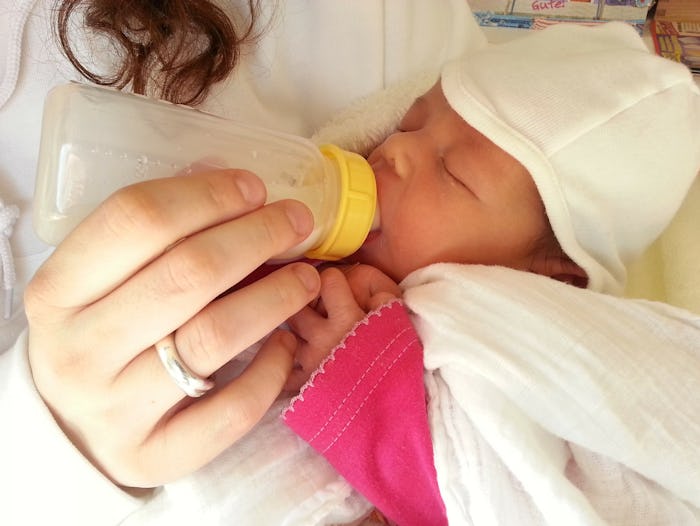Life
Donor Breast Milk Safety Guidelines Show Milk Needs To Be Affordable & Screened Better
Many a mommy war has started over breastfeeding. While some women have been shamed for breastfeeding in public, others have felt stigmatized because they chose not to. But what if you want to breastfeed... but can't? For those who can't imagine giving their child infant formula, one option is to use donor breast milk from a milk bank. Recently, the American Academy of Pediatrics released a guideline to encourage donor milk safety. This safety guideline shows that donor milk needs to be more affordable and better screened so that more babies can have the benefits of breast milk.
Many studies have shown that feeding a baby breast milk lowers respiratory illnesses, ear infections, and obesity rates, among other health benefits. For women who have trouble producing breast milk or who can't breastfeed for health reasons, using donor breast milk has become increasingly popular. But there are many safety concerns about donor breast milk, including the fact that not all of it is pasteurized. There are 20 non-profit donor milk banks in the United States and many more that are for-profit that pasteurize milk, AAP's report shows.
But not everyone is turning to legitimate sources — sales of milk in unregulated markets online have more than doubled between 2012 to 2015, The Verge found.
Underweight Infants Should Be Given Priority
Breast milk is especially important to underweight infants. The AAP Guideline highlights several studies that showed that preterm babies fare better on donor breast milk than on formula, including being less likely to develop or need surgery for an intestinal disease known as NEC. While some milk banks, including the Mothers Milk Bank of Austin, give preterm babies a priority to receive donor milk, the AAP guideline suggests that the supply of donor milk is far from being able to provide breast milk for all preterm babies, which some scholars have recommended.
The guideline also highlights that there are no rules for when to discontinue the use of donor breast milk in preterm infants, and that further research is needed to determine this.
More Screening Measures Are Needed
Donor milk is pasteurized by heating the milk at 62.5 degrees Celsius for 30 minutes. This is the main method used by Human Milk Banking Association of North America banks, which also provides donor blood tests and health screenings. The report finds that pasteurization does a great job of eliminating bacteria and viruses. Many online sources to buy milk do not provide such screenings, however. That can potentially expose the infant to bacteria and viruses like hepatitis and HIV. The AAP's guidelines thus recommend milk donors use the same safety methods as the Human Milk Banking Association of North America, which would require extensive regulation.
Make Donor Milk More Affordable
Donor breast milk can cost up to $5 an ounce, and newborn babies drink 2 to 3 ounces of milk per pound of weight, according to What To Expect. That means if you bought breast milk from OhioHealth at $4.25 an ounce, it will cost at least $85 a day to feed your 10-pound bundle of joy.
Although the Affordable Care Act encourages covering breastfeeding, donor breast milk is almost never covered by insurance, The Verge reported. AAP's report encourages every state to offer reimbursement for donor milk, and for more hospitals to create policies to make donor milk more affordable. Because breast milk shouldn't be something only rich women can give to their babies.
